Humans or Bots? Style Versus Substance in Your SEO Copy
Well before the dawn of Internet marketing, David Ogilvy famously said, “On the average, five times as many people read the headline as read the body copy. When you have written your headline, you have spent eighty cents out of your dollar.”
Humans, it seems, are hardwired to skim. Unfortunately, humans do not sort and rank the contents of the Internet–computers do.
Here is a simple process to build pages that satisfy both bots and users.
A 2011 article in The Atlantic titled “Google Doesn’t Laugh: Saving Witty Headlines in the Age of SEO” touched upon an enduring question within web publishing: how should an editor incorporate the necessary keywords to rank a page without making the copy look as if it was written by a Dementor with a thesaurus?
Here is a simple process to build pages that satisfy both bots and users, creating well-qualified traffic in the process. After all, getting users to click on a result is a key signal of quality to search engines and will increase traffic over time. This has been demonstrated on a small scale.
As a brief refresher, here are some of the specific terms discussed:

All of these elements are generally in the control of the publisher and generally considered the “gimmes” of SEO.
How to Create Pages That Satisfy Search Engines and Users
1. Identify one or two target keywords
Selecting which primary keyword(s) to target with a page is a crucial step of any SEO strategy, regardless of niche. While keyword research is out of this article’s scope, there are a number of fantastic resources available to help newcomers (Moz, KISS Metrics).
2. Incorporate those keywords into the title tag, meta description, and URL.
This is about 70% of the magic when it comes to title tag optimization. Titles are one of the most powerful signals a site can send a search engine about a page’s topic and, even more importantly, they’re within the publisher’s control. Incorporating the targeted term(s) into the URL also acts as a small ranking signal and ensures the URL is descriptive for users. Finally, including the targeted term(s) within the meta description will bold the word when searched for, helping the snippet standout amongst competing results.
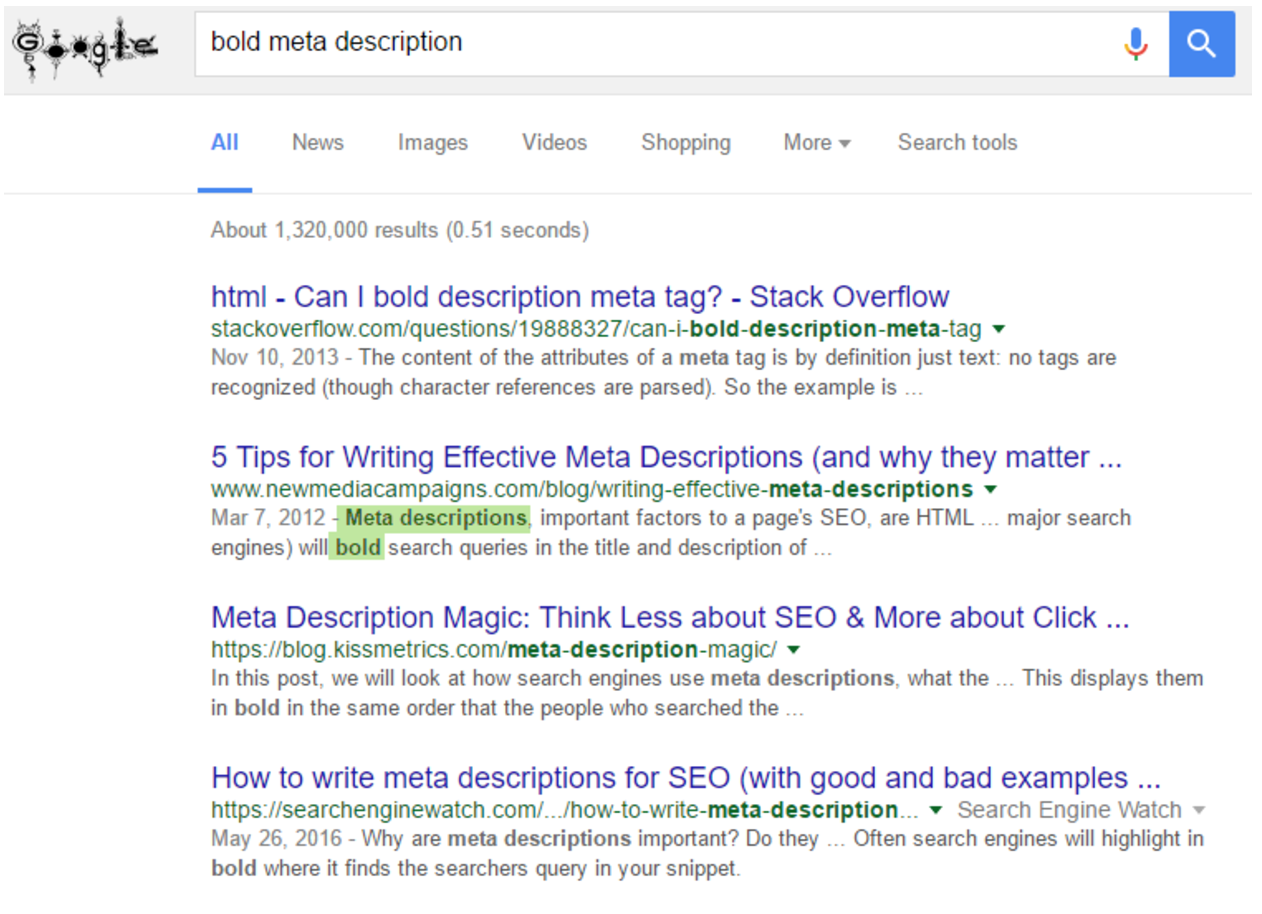
3. Use the remaining pixel width to communicate the unique value proposition of the page to users.
This is where the rest of the magic happens. While the keyword inclusion in step two helps in establishing topical relevancy for a page and increasing a page’s likelihood to rank for a query, there are a lots of tricks you can use to help entice a user’s click. Ranking is half the battle, getting the click is the other.
Some of the most common phrases that can be included to help a snippet stand out:
Category: superlative
Modifiers: best, top, greatest, shortest, smallest, fastest, tastiest, cheapest
Example: Trip Advisor using “best” in page titles for [austin hotels], indicating the quality of the hotels the user will be able to choose from. These are especially useful when a user is looking for something that has many different options–indicating that the list has already been curated is often a signal of quality to users and entices a click.

Category: low price
Modifiers: pricing info, cheap
Example: Hotels.com, Kayak.com, Expedia.com, Hipmunk all specifically call out pricing in their title tag, even though it is not a targeted phrase. A price sensitive query like [cheap austin hotels] is executed by a user that is clearly interested in the cost of the hotel they may book. Sharing the exact price is a great way to boost the click through rate (CTR) of the page.

Category: volume
Modifiers: numbers, measurements
Example: Here we have ShaneConlan1, DIY Network, Pinterest, and House on the Way all utilizing a form of volume in their title tags.
Shane and House on the Way are using the number to highlight how simple their solutions are. DIY Network takes another approach, showing four different ways to hang a shelf, increasing the likelihood that at least one solution will work for me. Pinterest goes for quantity over quality, targeting a user that is still in the early stages of hanging up a shelf and seeking inspiration. As someone who just wants to hang up the damn shelf and move on, I’d probably click on DIY Network or House on the Way. Part of me just doesn’t trust Shane. Sorry, Shane.
We may hate them, but the psychology behind numbers means they are likely here to stay, at least in the short term, within title tag strategy.
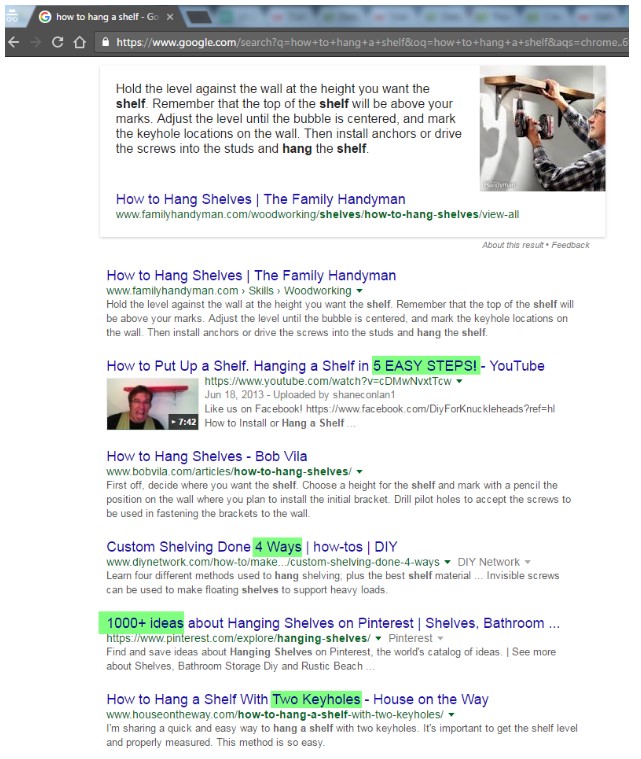
Category: emotion
Modifiers: powerful adjectives, adverbs
Example: WikiHow does a great job of selling their meditation tips as “easy” and “relaxing,” which is certainly appealing, given the type of user that would be seeking meditation advice. To see how a prospective title tag measures on the emotional scale, try using this tool.
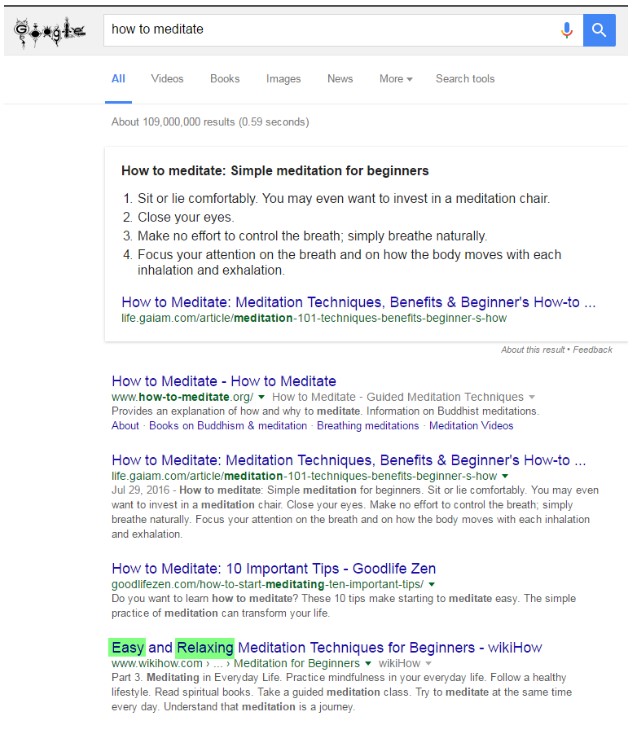
As a point of contrast, notice that these exercise sites do not sell their squat technique pages as “easy” or “relaxing,” but rather ensure how “perfect” and “proper” their squat technique instructions are. These are strong descriptors to help sell the benefit of the page to the user.
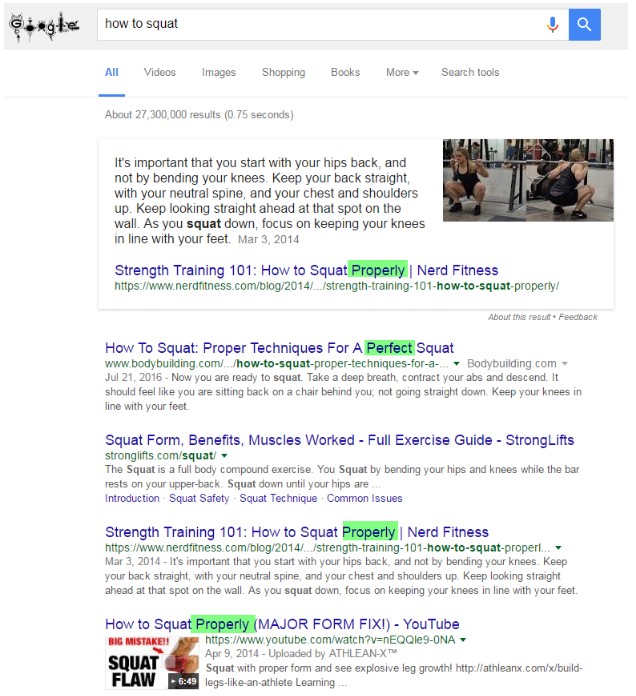
Here we see “perfect,” “famous,” and “old-fashioned” used to distinguish the top three results for [pumpkin pie recipe]. While “old fashioned” isn’t a wise adjective to use when selling heart rate monitors, there’s a positive emotional appeal when describing food–especially comfort foods or desserts.

Category: unique value (i.e. Why should the user care?)
Modifiers: do more, save time, look better naked, get rich, etc.
Example: This varies widely from page to page, but ultimately it should answer the question “what will this page do for me?” Why click on this link and not one of the nine others on the results page?

WebMD creates an anxiety relivable by click: what should I know about protein powder?
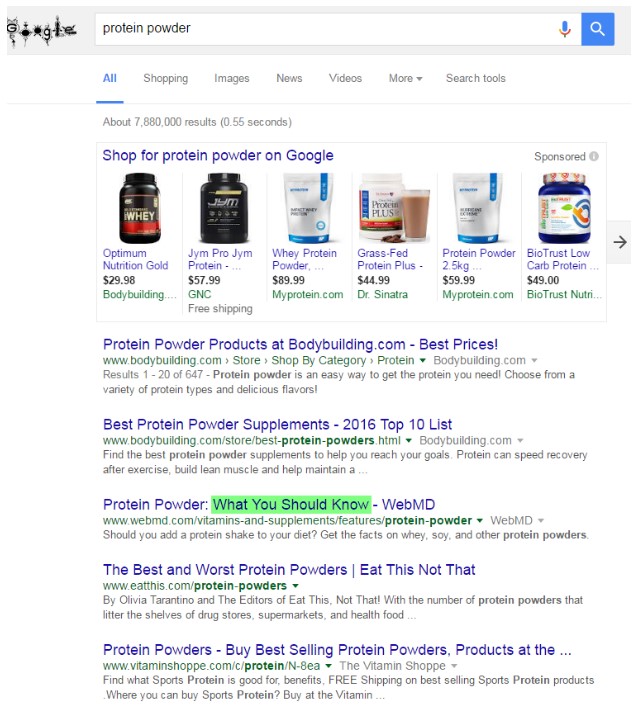
For [how to buy stocks], MarketWatch, Investopedia, and The Motley Fool assume a novice skill level of the searcher and reassure them about the simplicity and jargon-less nature of their pages.
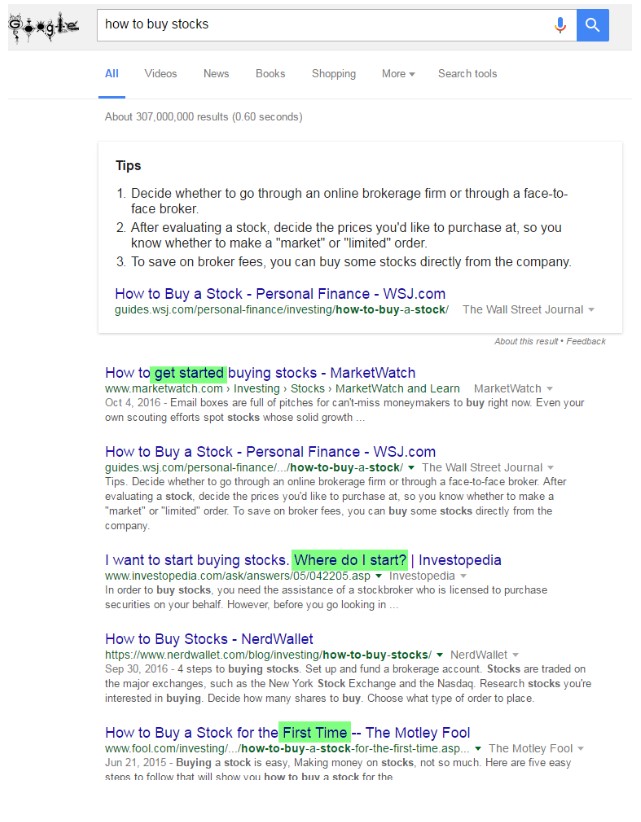
What about Meta Descriptions?
All of the above examples focused on title tags for a reason: they are a strong ranking signal for organic search results. Meta descriptions exist solely to earn the click of the user; they do not influence search rankings directly, except as much as they influence the CTR of the user. Therefore, put whatever you think will earn a click in there.
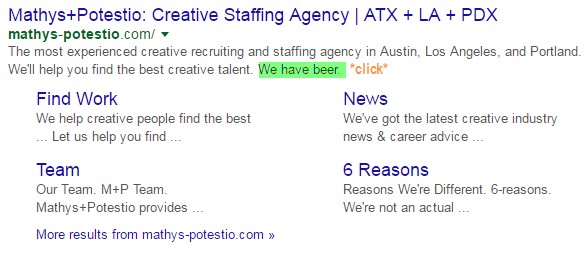
How do I know if the title tag and meta description are too long?
Use this snippet preview tool by Technical SEO.
How do I get started?
All of the necessary data to get started are contained in Google Search Console and Bing Webmaster Tools. If you have not registered your site with those tools, sign up now!
For a fantastic guide on selecting which pages and queries can be improved, check out some golden advice from Cyrus Sheppard.
How do I test title tags?
Unfortunately, testing title tags is relatively difficult for many sites due to a number of factors. Crawl rate and lack of experimental control are the two biggest (i.e. it’s hard to say when your pages’ snippets will be updated in search results and it’s nearly impossible to isolate the title tag change as the only variable in the experiment, as search engines are tweaking their algorithms daily).
One workaround for this is, published in 2011 by Get Elastic and by Pinterest in 2015, is to bucket URLs into similarly performing groups, apply the test experience to a subset of those buckets, and monitor the results. This takes a bit of brainpower to pull off, but can be worth it for larger sites.
If you’re on WordPress, it’s a bit simpler. YoRocket was recently rolled out for this explicit purpose and can be done without requiring a large number of URLs for separate test and control groups. The trade off is that the tests are structured as pre/post, which do not account for seasonality, domain-wide signals (i.e. signals that impact all site pages), and other algorithmic adjustments that may be made during the data collection period. Still, it is arguably better than doing nothing at all.
Wrapping It Up
The keyword is a long way off from being irrelevant in the world of SEO, but only focusing on keywords at the expense of value, emotion, and urgency will leave clicks on the table for many websites. With a little empathy and creativity, those snippets (and rankings) can sing.
Kyle Risley is an SEO expert at Vistaprint and also provides freelance SEO consulting. When he is away from his keyboard, he’s usually at a concert or digging through records.
This work is licensed under a Creative Commons Attribution-ShareAlike 4.0 International License.


